Redbuds in bloom are a most welcome harbinger of spring. Their dense clusters of magenta flowers bloom early, providing splashes of color against a winter landscape of browns and grays. Is the name redbud really the best our ancestors could come up with for this beautiful tree? How could they call that color “red”? Even Wikipedia manages a more accurate “pink to purple.” Other sources are more specific, identifying the brilliant flora as bright pink, rosy pink, magenta, or reddish purple.
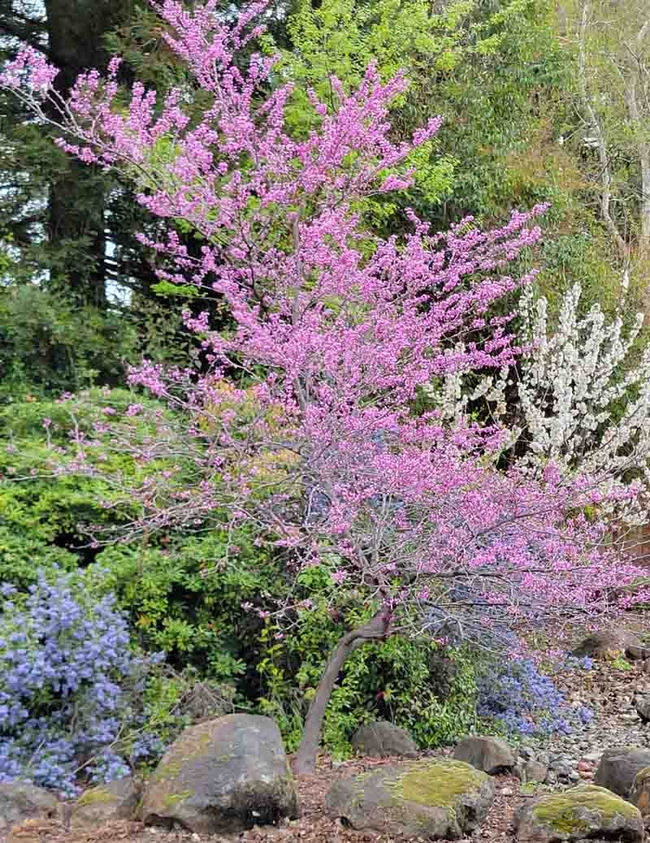
Cercis occidentalis is native to the arid western states. It is commonly known asWestern or California redbud, and sometimes Arizona redbud. Occidentem is Latin for “western sky” or “part of the sky in which the sun sets,” derived from the Latin verb occido – “go down, set.” The Occident is the longitudinal opposite of the Orient, and many species from China and other eastern regions are termed orientalis. Somewhere along the line, C. occidentalis acquired the second or synonymous binomial C. orbiculatum. Orbiculate translates naturally enough as round or circular in shape (in this case, in reference to the redbud's leaves). And if you are thinking now of Judas Tree as a common name, that belongs to the Eastern redbud. (Interestingly, the Latin name of the Eastern redbud is C. canadensis. And yes, you guessed it: canadensis is used in taxonomy to denote species indigenous to or strongly associated with Canada).
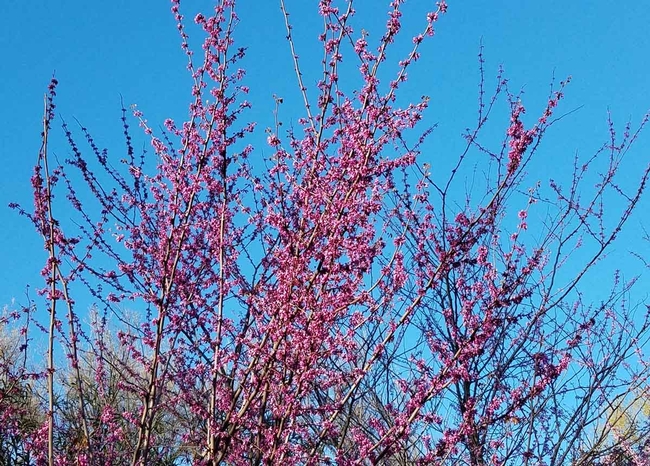
A hardy plant, the redbud is drought tolerant, sun-loving, and successful in a variety of soils. Typically, it prefers rather harsh environments with marginal, well-drained soils. It grows best in chaparral ecosystems below 4,000 feet in elevation, and prefers canyon walls and other steep slopes. It can also be found in gravely and rocky soils along streams above their flood zone. Western redbud tolerates some seasonal water and will grow in the bottom of ephemeral streambeds in little pockets, as well as on foothill benches, or tucked into crannies created by boulder outcroppings.
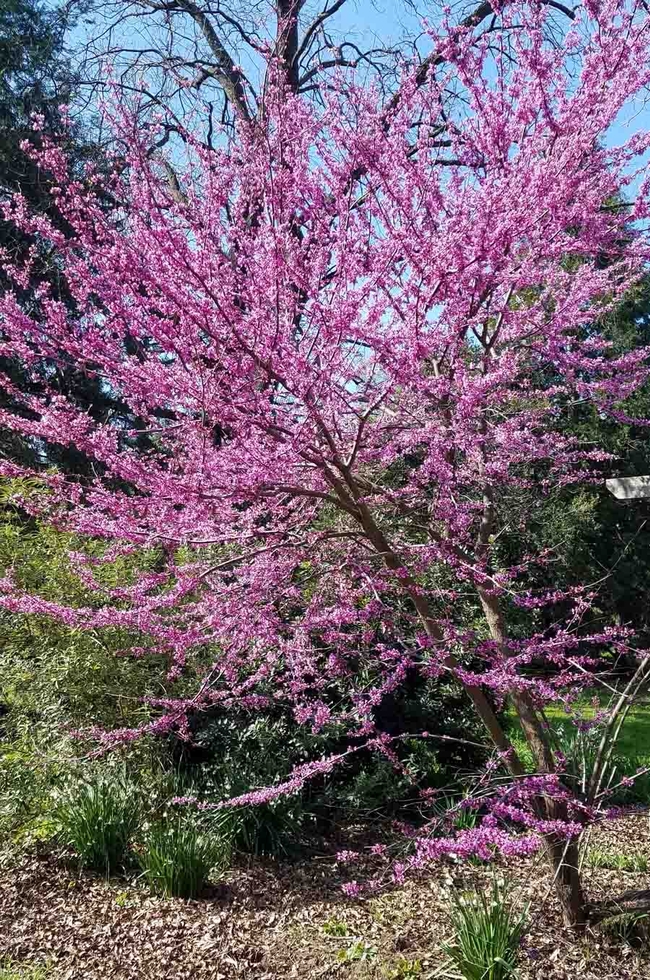
Western redbud is a popular landscape tree on the valley floor precisely because of its impressive beauty, which isn't restricted to eye-catching floral displays. The rounded, heart-shaped leaves are a silky combination of copper and green when they first emerge, darkening to various shades of green, gray-green, or blue-green. According to the USDA, the Western redbud's “autumn display of yellow turning to red and brown rival that of some eastern hardwoods.” This plant sets its fruit in the form of thin dry seed pods in autumn. Each pod contains about seven hard, bean-like seeds. As they ripen, the pods change in color from purple to russet brown. (On some redbuds, the mature pods hang on the branches into the next winter.) Once the redbud has shed itself of leaves and pods, the bare branches provide winter beauty as a silver-gray silhouette.
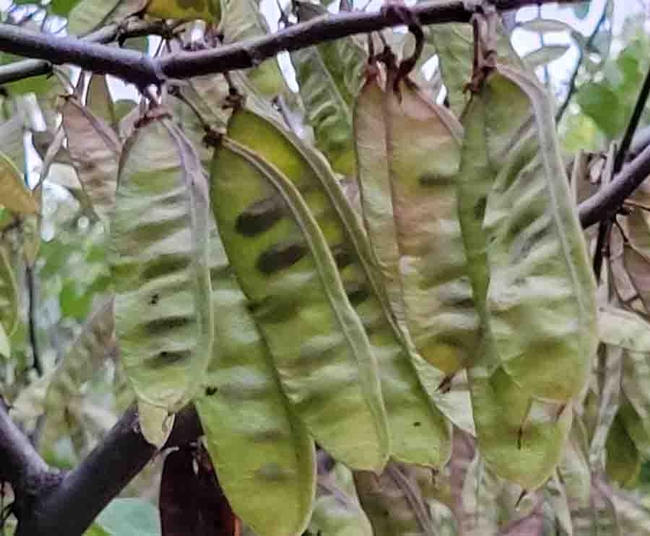
As a legume, redbud is an edible native. Native Americans enjoyed redbud flowers, young seed pods, and even young leaves, both raw and cooked. Apparently, redbud flowers taste almost as good as they look. Fully-opened flowers are somewhat tart and slightly sweet, and add interesting color and flavor (and Vitamin C!) to salads.
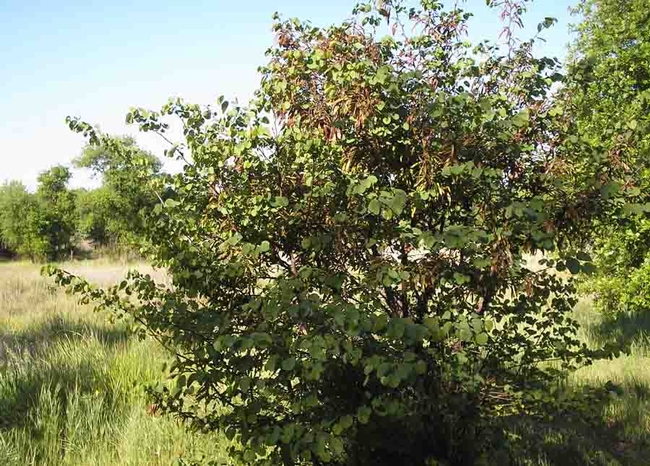
This beautiful and hardy native shrub is nowhere near as dull and plodding as its common name implies. While the redbud makes year-round contributions to the landscape, the Arbor Day Foundation correctly notes that “the sheer springtime beauty of the redbud may be its greatest hold on the American spirit.”
UC Master Gardeners of Butte County are part of the University of California Cooperative Extension (UCCE) system. To learn more about us and our upcoming events, and for help with gardening in our area visit our website. If you have a gardening question or problem, email the Hotline at mgbutte@ucanr.edu or leave a phone message on our Hotline at 530-552-5812. To speak to a Master Gardener about a gardening issue, or to drop by the MG office during Hotline hours, see the most current information on our Ask Us section of our website.


